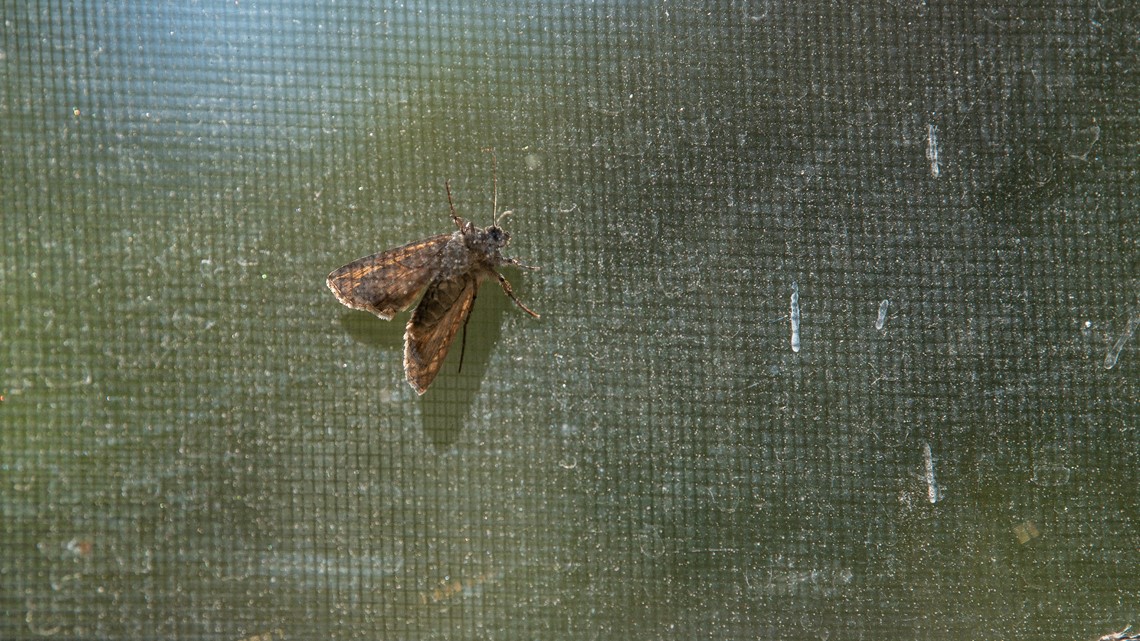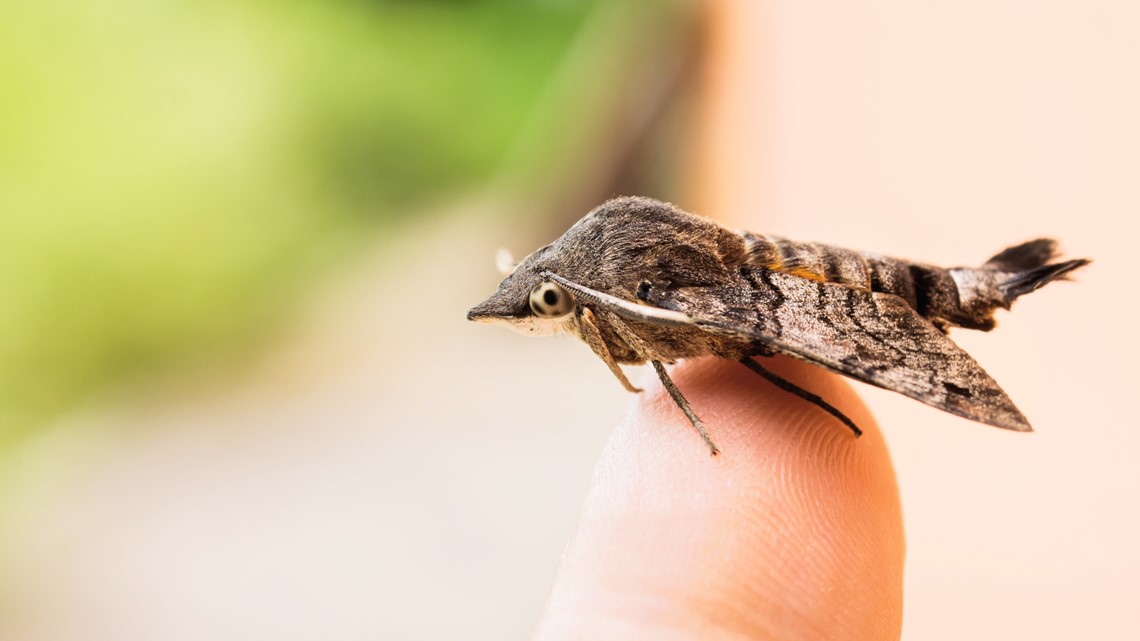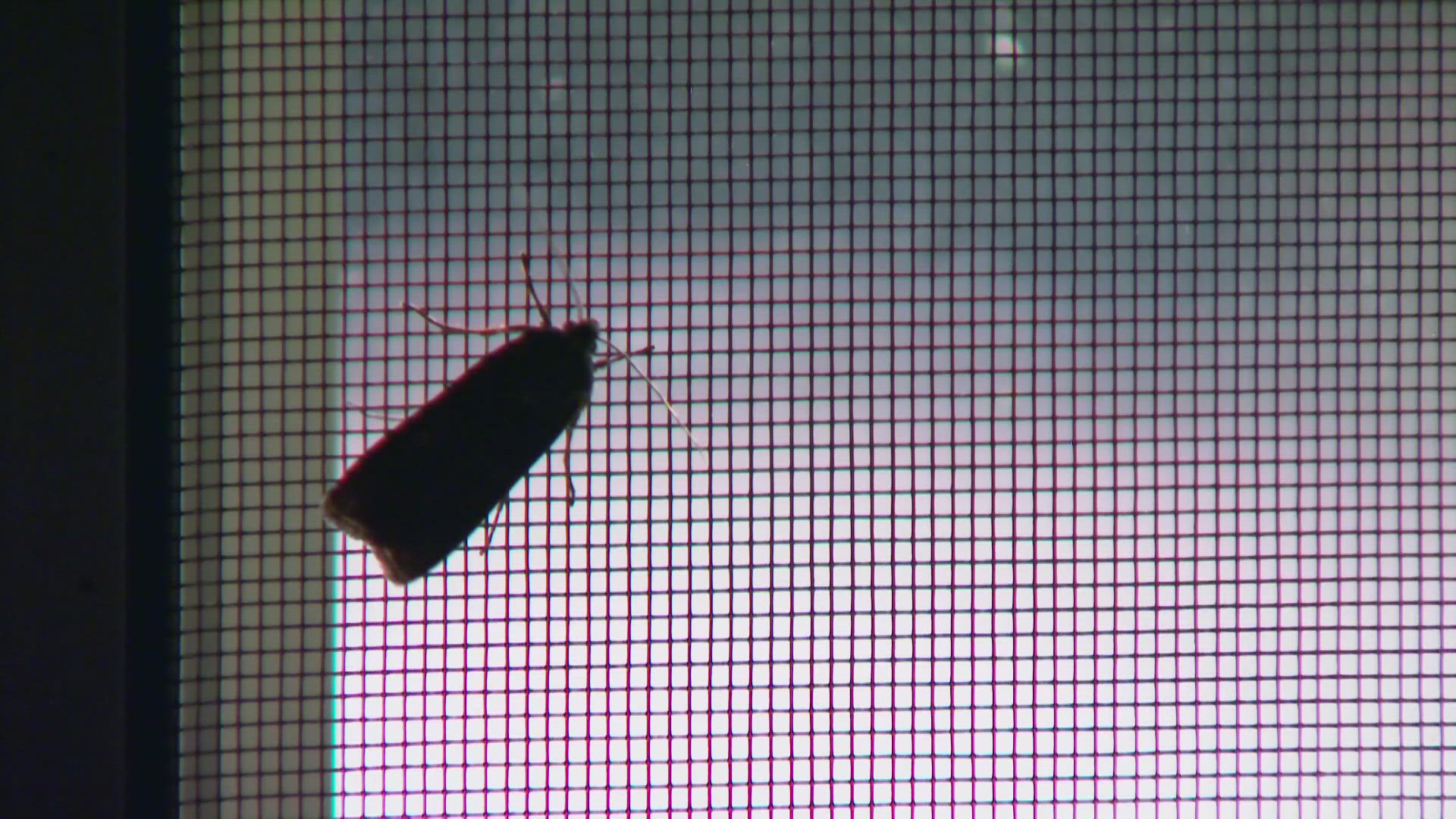DENVER — Miller moth season has arrived in Colorado.
The insects' yearlong migration pattern takes them westward over Colorado's Front Range, between stops on the eastern plains and the mountains, during late spring.
Why are there so many moths?
Coloradoans can expect to see plenty of miller moths this season, but the exact number depends on the weather.
Colorado State University (CSU) Extension said the term "miller moth" is given to any type of moth that is abundant in and around homes. In Colorado, the common "miller moth" is the adult stage of the army cutworm.
The caterpillar stage of the army cutworm feeds on crops and garden plants in winter and early spring. The adult form of the army cutworm feeds on nectar in late spring through early fall.
During warm months the moths migrate to mountains as they seek flowering plants.
When will the moth migration end?
Peak moth flights might last five to six weeks, generally starting between mid-May and early June, according to CSU.
They tend to cause most nuisance problems for only two to three weeks.
According to CSU, miller moths avoid daylight and seek shelter before daybreak, ideally in a dark and tight hiding spot.
Small cracks in the doorways of homes, garages, and cars make perfect hiding spots for the moths. Often moths may be found clustered together in particularly favorable sites.
Are miller moths harmful?
CSU experts said the migrating moths are not harmful.
The moths also do not lay eggs or feed on home furnishings.
While it might be tempting to swat or kill moths around the house, experts say to not give into the temptation. The moths are important to Colorado's ecosystem.
Butterfly Pavilion entomologist Francisco Garcia Bulle Bueno said during last year's migration season that miller moths are pollinators, meaning they help assist plants to reproduce.
Bueno said moths are as important pollinators as butterflies. Butterflies pollinate during the day and look bright, beautiful and charismatic.
How can I get less moths in my house?
Moths pollinate at night and are notorious for being attracted to electric lights.
Miller moths avoid daylight and seek shelter before daybreak in, ideally, a daytime shelter that is dark and tight. Small cracks in the doorways of homes, garages and cars make perfect hiding spots for the moths.
Bueno said if people are bothered by miller moths, they should turn off porch and outdoor lights early during the evening.
"What we recommend to people is don't kill them," Bueno said. "They're just here for awhile. They're going to be passing by. They just need a little hotel to spend the day. They will not bother anyone, they are harmless, they don't have a sting, they are totally chill."
Miller moths are also delicious for birds and bears, making them vital to the Colorado ecosystem.
Will there be moths in the fall?
The return flights (mountains to the plains) for the moths occurs early fall usually span a shorter period of time, typically beginning in late September. Because the majority of moths die during the summer, the return flight is less obvious.
Areas close to Colorado's mountains receive moths that may have migrated well over a hundred miles en route to summer feeding sites, according to CSU.


> Top stories curated daily just for you! Sign up for the 9NEWSLETTER to get can’t-miss stories, Next and Broncos content, weather and more delivered right to your inbox.
MORE WAYS TO GET 9NEWS
Subscribe to our daily 9NEWSLETTER
Download the 9NEWS APP
iTunes: http://on9news.tv/itunes
Google Play: http://on9news.tv/1lWnC5n
HOW TO ADD THE 9NEWS APP TO YOUR STREAMING DEVICE
ROKU: add the channel from the ROKU store or by searching for KUSA.
For both Apple TV and Fire TV, search for "9news" to find the free app to add to your account. Another option for Fire TV is to have the app delivered directly to your Fire TV through Amazon.



